Sample information |
|
| Picture |
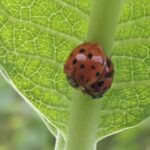
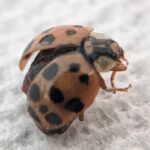
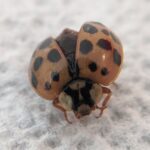
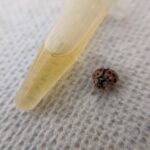
|
|---|---|
| Location | |
| Collection date | 08/30/2020 |
| Captive / Cultivated? | Wild-caught |
| Group | Bordenstein Lab |
| Observations | This ladybird beetle was located on a milkweed plant. It was a bright sunny day and 80F. The beetle is presumably female as a male was trying to mate with her. She was a bright red color, but the pigmentation was diluted during ethanol preservation. She was collected directly from the milkweed plant by quickly placing a collection vial over top and immediately capping with a lid. |
| Putative identification | Arthropoda Insecta Coleoptera Coccinellidae Harmonia Harmonia axyridis |
Methods |
|
| Extraction kit | DNeasy (Qiagen) |
| DNA extraction location | Abdomen |
| Single or Duplex PCR | |
| Gel electrophoresis system | MiniOne |
| Buffer | TBE |
| DNA stain | GelGreen |
| Gel images |
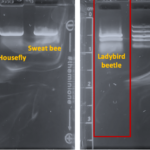
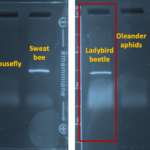
|
| Protocol notes | The beetle was stored in 70% ethanol at room temperature for about 3 weeks prior to DNA extraction. DNA Extraction: DNA was extracted from the entire abdomen. It was likely too large because it created a thick slurry during lysis. The specimen was incubated in lysis buffer at 56C for 2 hours. Because there was cell debris, I did a 30 sec spin and transferred the supernatant to a fresh tube of 200ul ethanol. This was placed in the freezer overnight and DNA was purified the following day. Eluted DNA was immediately incubated at 65C for one hour prior to PCR. PCR: MiniOne Taq polymerase was used. Gel electrophoresis: The arthropod gel looks whispy; however, that went away as the gel ran longer. This could have been caused by not adding loading dye to samples. The results were very clear, though. I re-colored the gel images in PowerPoint. The MiniOne ladder contains 5 bands: 100, 300, 500, 1000, and 2000 bp. |
Results |
|
| Wolbachia presence | Yes |
| Confidence level | High |
| Explanation of confidence level | The DNA extraction was successful because the arthropod COI amplified. Both (+) and (-) controls worked. The Wolbachia 16S rRNA band was present. I wonder if this is a male-killing Wolbachia? The Sanger sequences were both low-quality. By analyzing the most defined peaks, the arthropod was classified as the Asian ladybeetle with 100% identity. This reflects morphology of the insect. The Wolbachia chromatogram was too low-quality to analyze. |
| Wolbachia 16S sequence | Download AB1
|
| Arthropod COI sequence | Download FASTA
Download AB1
AGTAGGAACATCGTTAAGTATTTTAATTCGGTTAGAATTAGGAACTAGAGGAAGATTAATTGGAAACGACCAAATTTATAATATAATTGTTACAGCTCATGCTTTCATTATAATTTTCTTTATAGTAATACCTATTATAATTGGGGGTTTTGGAAATTGATTAGTTCCTTTAATAATTGGAGCTCCTGATATAGCATTTCCACGATTAAATAACATAAGATTTTGACTTTTACCCCCTGCTTTAACTCTTTTAATTTTAAGAACAATCGTAGAAATAGGGGCAGGAACAGGATGAACTGTTTACCCTCCTCTTTCTTCTAATTTAACACATAATGGGCCTTCAGTAGATTTAGTGATTTTTAGTTTACATTTAGCAGGAATTTCCTCAATTTTAGGTGCAGTAAATTTCATTTCAACTATTATAAATATACGTCCATTTGGTATAATACTTGATAAAACTCCTTTATTTGTATGATCTGTTCTTATTACAGCAATTCTTTTATTACTATCACTACCAGTTCTTGCAGGAGCAATTACTATACTATTAACTGACCGAAACTTAAATTCTTCTTTTTTTGACCCAACCGGTGGGGGAGACCCAATTTTATACCAACATTT
BLAST at The Wolbachia Project BLAST at NCBI
|
| Summary | The Harmonia axyridis was found to be postive for Wolbachia. |
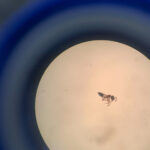 Ant
Ant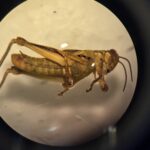 Differential Grasshopper – Melanoplus differentialis
Differential Grasshopper – Melanoplus differentialis Pill Bug (Armadillidium vulgare) – Draft
Pill Bug (Armadillidium vulgare) – Draft Melanoplus Femurrubrum
Melanoplus Femurrubrum Grasshopper – Orthoptera
Grasshopper – Orthoptera